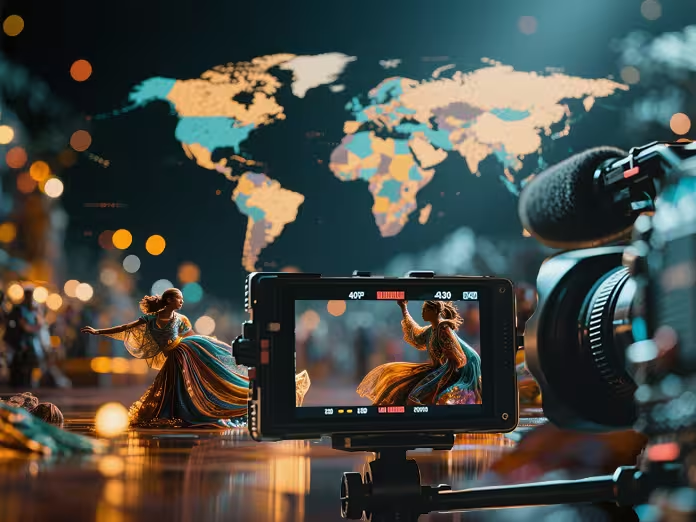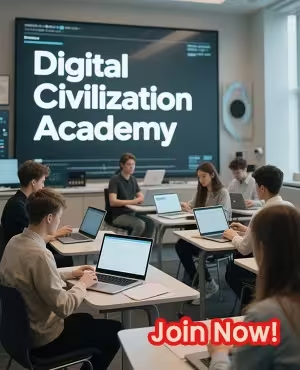
The digital revolution has transformed how cultural movements spread across borders, creating unprecedented waves of social change that ripple around the globe within hours. From viral dance trends to political activism, global digital cultural movements are redefining how we connect, communicate, and create collective impact in the 21st century.
The Birth of Digital-First Cultural Phenomena
Unlike traditional cultural movements that took months or years to cross continents, today’s global digital cultural movements emerge and evolve at lightning speed. Platforms like TikTok, Instagram, Twitter, and YouTube have become the launching pads for cultural shifts that transcend geographical boundaries and linguistic barriers.
Consider the meteoric rise of K-pop culture, which leveraged digital platforms to transform from a regional Korean phenomenon into a global powerhouse. BTS and BLACKPINK didn’t just create music; they cultivated digital communities that span every continent, proving that cultural movements can now originate anywhere and reach everywhere through strategic digital engagement.
The #MeToo movement exemplifies how global digital cultural movements can drive meaningful social change. What began as a hashtag became a worldwide conversation about power, consent, and accountability, demonstrating the profound impact of digitally-amplified collective action.
Platform-Specific Movement Dynamics
Each digital platform contributes uniquely to global cultural movements. TikTok’s algorithm democratizes content creation, allowing unknown creators to spark movements that influence millions. The platform’s short-form video format has birthed countless cultural phenomena, from dance challenges to social awareness campaigns.
Instagram’s visual-centric approach has revolutionized how movements communicate their messages. The platform’s Stories and Reels features enable real-time documentation of cultural shifts, while its global reach ensures that local movements can quickly gain international attention.
Twitter remains the epicenter for real-time cultural commentary and movement coordination. Its hashtag system creates digital gathering spaces where global conversations unfold, while its rapid-fire nature makes it ideal for breaking news and immediate responses to cultural events.
YouTube’s long-form content capabilities allow for deeper exploration of cultural movements, providing educational resources and detailed documentation that helps movements maintain momentum and reach broader audiences.
The Anatomy of Viral Cultural Movements
Successful global digital cultural movements share common characteristics that enable their rapid spread. They typically feature simple, replicable actions that participants can easily adapt to their local contexts while maintaining the movement’s core message.
Visual elements play a crucial role, as images and videos transcend language barriers more effectively than text-based content. Movements that incorporate recognizable symbols, colors, or gestures often achieve greater global penetration.
Emotional resonance proves essential for sustained engagement. Movements that tap into universal human experiences—joy, frustration, hope, or solidarity—create deeper connections that motivate continued participation across diverse cultural backgrounds.
The participatory nature of digital platforms transforms audiences from passive consumers into active contributors. This democratization of content creation ensures that movements evolve organically, incorporating diverse perspectives while maintaining their central themes.
Economic Impact of Digital Cultural Movements
Global digital cultural movements generate substantial economic value across multiple industries. The creator economy, valued at over $100 billion globally, directly benefits from viral cultural trends that drive engagement and monetization opportunities.
Fashion brands increasingly align with digital movements to capture trend-conscious consumers. The rise of “cottagecore” aesthetics and sustainable fashion movements demonstrates how digital cultural shifts influence purchasing decisions and brand strategies worldwide.
Entertainment industries adapt their content strategies based on digitally-driven cultural movements. Streaming platforms analyze trending topics and cultural conversations to inform their programming decisions, while music labels scout for artists who can tap into emerging digital movements.
Tourism sectors benefit as digital movements highlight specific locations or experiences, creating new destination trends and cultural pilgrimage sites that attract global visitors seeking authentic connections to digital phenomena they’ve encountered online.
Challenges and Controversies in Digital Cultural Movements
The rapid spread of global digital cultural movements also presents significant challenges. Cultural appropriation concerns arise when movements originating in specific communities are adopted and monetized by others without acknowledgment or respect for their origins.
Misinformation can hijack legitimate movements, spreading false narratives that undermine their original purposes. The speed of digital dissemination makes fact-checking difficult, allowing problematic content to gain traction before corrections can be implemented.
Platform algorithms sometimes amplify divisive content over constructive dialogue, leading to polarization within movements that originally sought unity. This algorithmic bias can fragment global movements into echo chambers that reduce their overall effectiveness.
Corporate co-optation represents another significant challenge, as brands attempt to capitalize on movements for marketing purposes, potentially diluting their authentic messages and alienating original participants.
The Future of Global Digital Cultural Movements
Emerging technologies promise to further transform how cultural movements develop and spread. Augmented reality and virtual reality platforms are creating new spaces for immersive cultural experiences that transcend physical limitations.
Artificial intelligence is beginning to predict and analyze cultural trends, potentially enabling more strategic movement planning while raising questions about authenticity and organic cultural development.
Blockchain technology offers new possibilities for verifying movement origins and ensuring proper attribution to cultural creators, potentially addressing appropriation concerns while enabling new forms of digital cultural ownership.
The metaverse concept suggests future cultural movements might unfold in persistent virtual worlds, creating entirely new forms of global cultural interaction and collaboration.
Conclusion: The Unstoppable Force of Digital Cultural Unity
Global digital cultural movements represent one of the most powerful forces shaping contemporary society. They demonstrate humanity’s innate desire for connection and collective action while showcasing the democratizing potential of digital technology.
As these movements continue evolving, they challenge traditional power structures, create new forms of economic value, and foster cross-cultural understanding on an unprecedented scale. The future belongs to communities that can harness the power of digital platforms to create authentic, inclusive movements that resonate across cultural boundaries.
The next great global digital cultural movement is already forming somewhere in the digital ecosystem, waiting for the right moment, message, and momentum to transform our world once again. The question isn’t whether it will happen, but how we’ll participate in shaping its impact on our collective future.



































